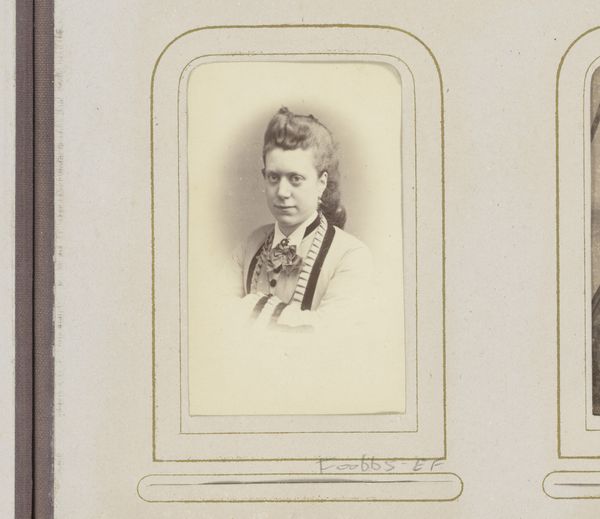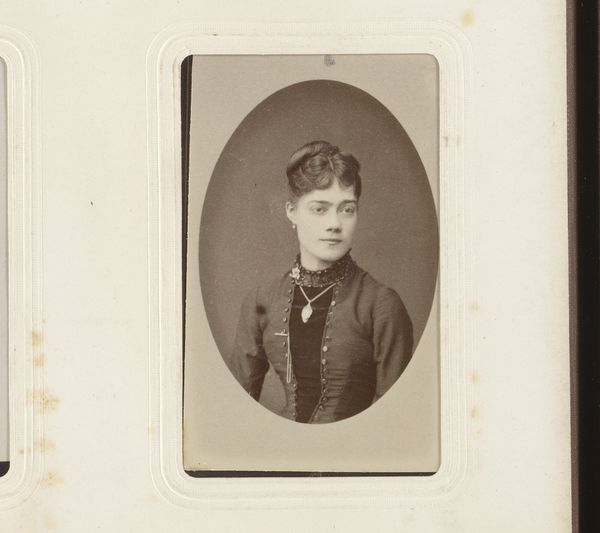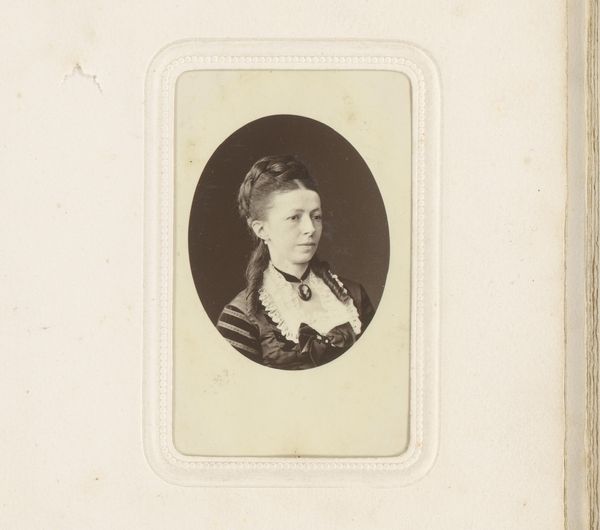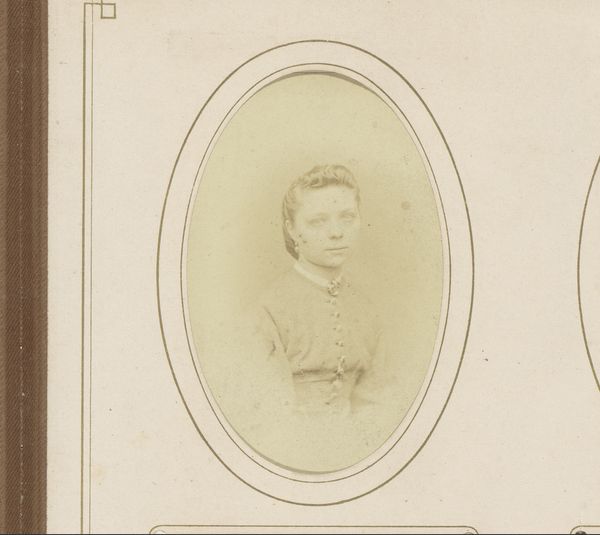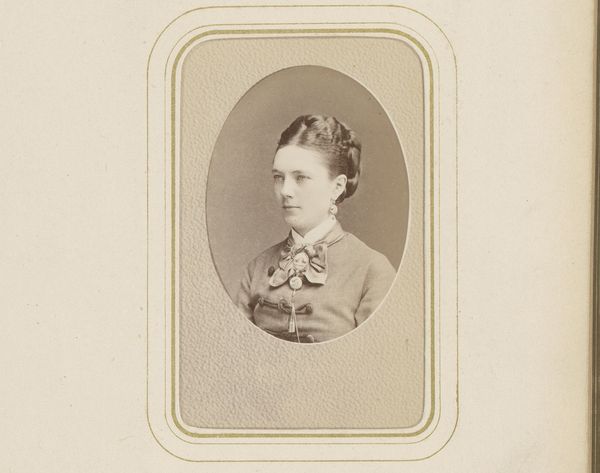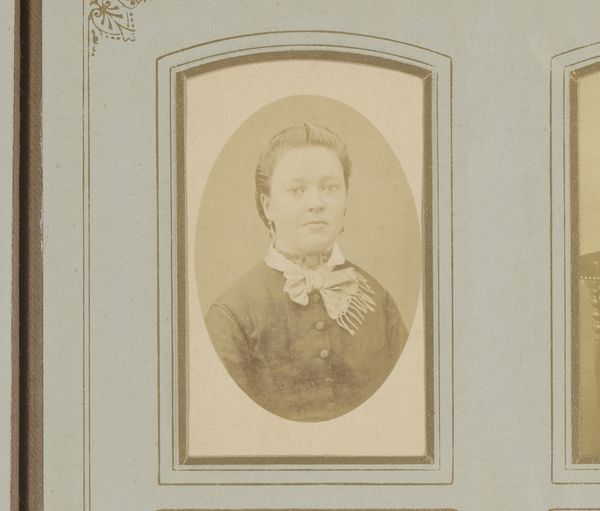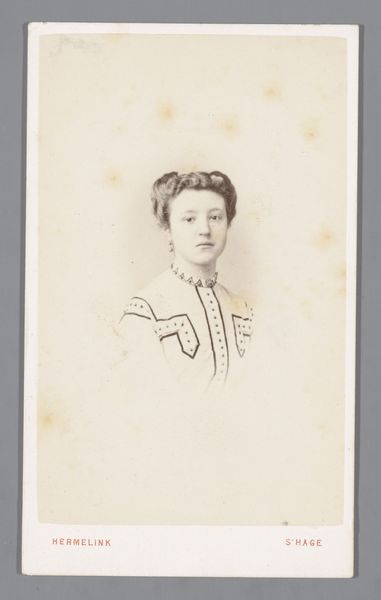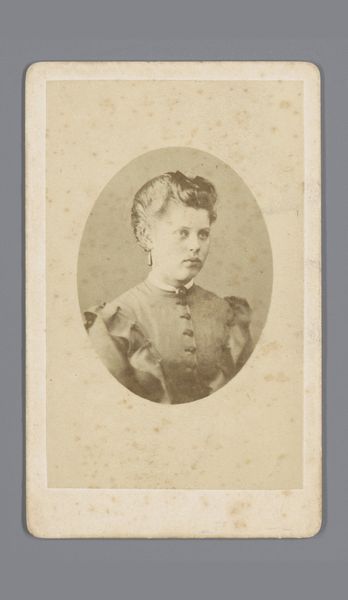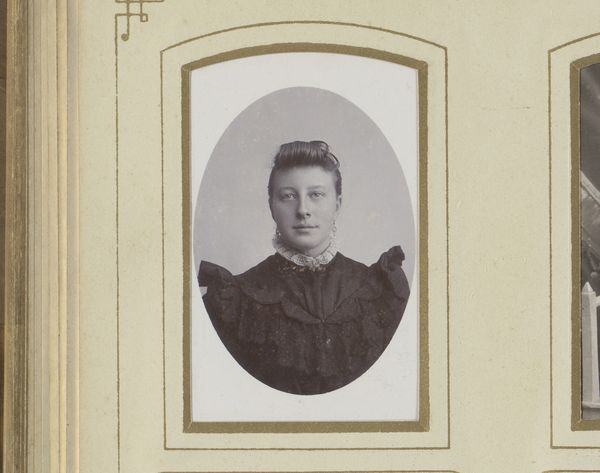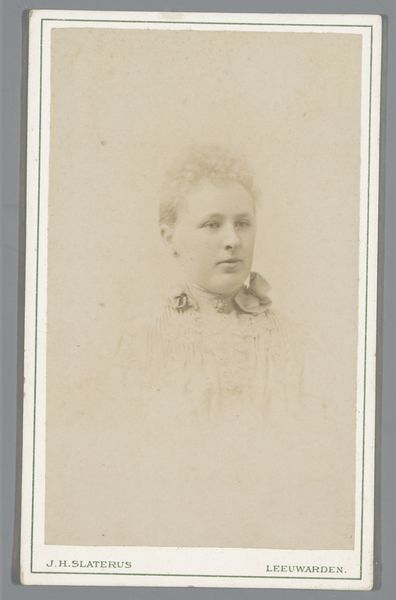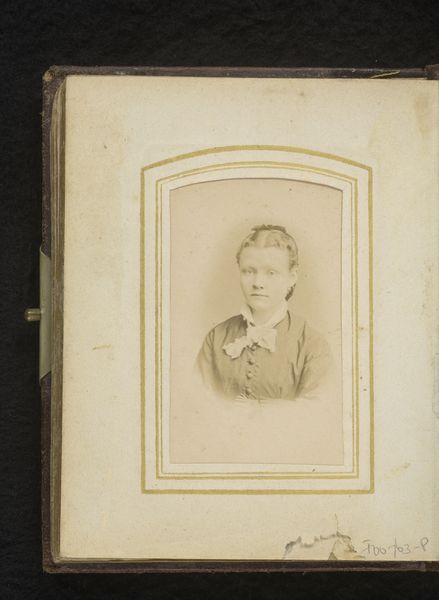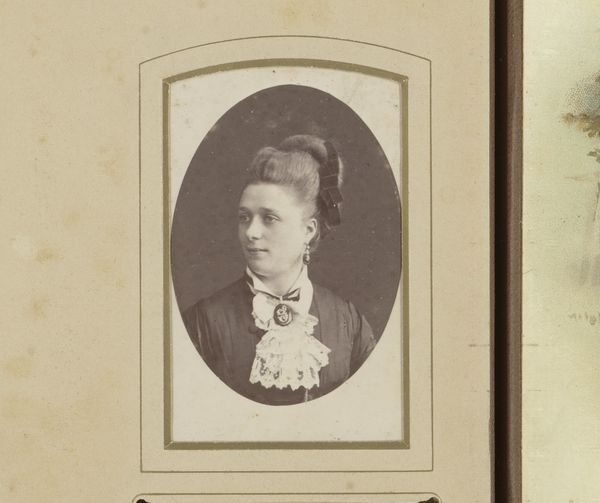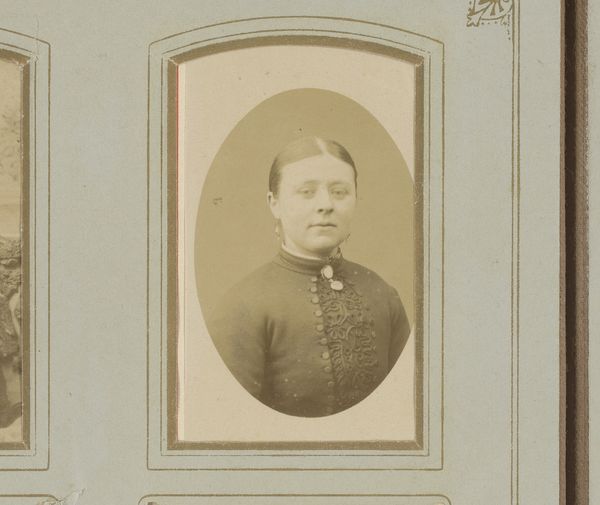
photography
#
portrait
#
photography
Dimensions: height 83 mm, width 52 mm
Copyright: Rijks Museum: Open Domain
Curator: This is Albert Greiner's "Portret van een zittende jonge vrouw," created sometime between 1861 and 1874. It's currently held at the Rijksmuseum and falls under the category of photography. Editor: Ah, instantly I think of quiet afternoons and inherited lockets. There's a certain… melancholy charm in her eyes, almost like a secret she's about to tell. Curator: Yes, portraits during this era often conveyed carefully constructed identities. Examining the materials and the photographic process tells us a great deal about middle-class aspirations and how identity was performed through such material objects. The choice of clothing, the pose – everything speaks to the social standing and perhaps the sitter’s desire to be remembered in a specific way. Editor: I see what you mean. The high collar and elaborate sleeves, a real display of fabric and adornment. I can almost feel the weight of expectation pressing on her shoulders. But beneath the presentation, there's a vulnerability that peeks through, doesn’t it? It makes me wonder about her life, her dreams… things photography often tries, but fails to, capture fully. Curator: It’s interesting you mention that, because photography at the time was still fairly novel, and portraits like this were intended as much for display as for intimate keeping. This creates a fascinating tension. While she might look solemn for the camera, perhaps to conform to photographic ideals of the time, the final object becomes circulated in the public sphere. It blurs that boundary between private and public lives. Editor: A blurry line indeed. Something intimate rendered public... perhaps the locket is there as a hidden marker, grounding her to those who truly know her and her world? These period photographs remind me that we are never fully captured by images – we spill beyond them into the unsaid. What a gift that the gaps endure and haunt. Curator: I agree completely. When we look at "Portret van een zittende jonge vrouw," we are seeing both a historical document and the material production of a certain image of womanhood. These pieces are really critical to the way we think about labor and class in the era. Editor: Thanks, for guiding my reflections here. This photograph, imbued with history, whispers of personal narratives untold and enduring social meanings.
Comments
No comments
Be the first to comment and join the conversation on the ultimate creative platform.
